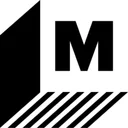Banks That Use Zelle: List and What to Know
See if your bank participates in Zelle’s peer-to-peer transfer network.

Many, or all, of the products featured on this page are from our advertising partners who compensate us when you take certain actions on our website or click to take an action on their website. However, this does not influence our evaluations. Our opinions are our own. Here is a list of our partners and here's how we make money.
The peer-to-peer payment network Zelle offers free and almost instant transfers between bank accounts in the mobile apps and websites of many U.S. banking institutions. Launched in 2017, Zelle’s network has grown to include more than 2,300 participating banks and credit unions. Many, but not all, bank customers can find Zelle featured in their bank’s mobile app.
Using a bank that offers Zelle in its app has perks: There’s no extra app to download, and you can send transfers to friends and family at different banks.
Quick facts about Zelle
Zelle is primarily used to send, request or receive funds with friends and others you trust.
Zelle transfers can be delivered within minutes and generally are free.
A Zelle transfer is like giving cash to someone. It’s not reversible.
Customers at banks, credit unions or neobanks that don’t offer Zelle can no longer access the service. Zelle’s standalone app was shut down in April 2025.
» Learn more: How Zelle works
Online banks that use Zelle
We considered online banks with strong account offerings that participate in Zelle’s network. Click each bank name to read our review:
SoFi.
*These banks participate through their parent bank's partnership with Zelle.

Member FDIC
Forbright Bank Growth Savings

4.00%
$0

Member FDIC
Axos ONE® Savings

4.31%
$1,500

Member FDIC
Varo Savings Account

5.00%
$0

Member FDIC
E*TRADE Premium Savings

3.75%
$0
Nerdy Perspective
What are some alternatives to Zelle if my bank doesn't participate?
If your bank or credit union doesn’t offer Zelle as a way to transfer money, consider using a similar peer-to-peer payment app. I use popular options like Cash App, PayPal and Venmo to send and receive money quickly and cheaply, just like I also do with Zelle. Wiring money through a bank or a nonbank money transfer provider is another option, but that requires considering factors such as fees and how long the transaction will take.

Traditional banks that use Zelle
We considered the largest U.S. banks as well as various regional banks that we’ve reviewed. Click each bank name to read our review:
Nearly instant transfers between your accounts: When you enroll two accounts at two different banks with Zelle, you can transfer money between banks faster than typical ACH transfers. Standard bank-to-bank transfers can still take multiple days.
Credit unions that use Zelle
We considered credit unions we’ve reviewed and that stand out due to their size or services. Some credit unions have geographic or other membership restrictions. Click each credit union name to read our review:
Don’t see your bank or credit union? See the full list of financial institutions in Zelle’s network on Zelle’s website.
Zelle transfers are not wire transfers, which use a separate network. Both can provide funds delivery within minutes, but wires tend to have high fees – such as $30 – and are intended for large amounts, such as a home purchase. Zelle transfers are typically free and can be for various reasons and amounts (up to a limit).













